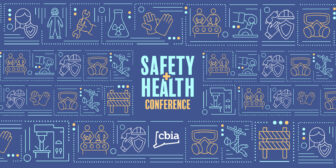Once a Choice, Sustainability Now a ‘Necessity’

Incorporating sustainable practices into your business processes helps the bottom line and tells the world you are a responsible company.
“It’s a necessity,” keynote speaker Fazleena Badurdeen told more than 140 business leaders at the Nov. 22 Connecticut Sustainability Conference at Pratt & Whitney in East Hartford.

Once an option for businesses, sustainability is now a must, said Badurdeen, professor of mechanical engineering and director of graduate studies for manufacturing systems engineering at the University of Kentucky.
The old days of pushing product out the door without giving thought about where it ends up are over, she said.
“We don’t focus on what happens after we give the product to the customer,” Badurdeen said.
But when you consider how many products wind up in the waste stream, sustainability becomes essential—and manufacturers must lead the way, she said.
“Ninety-five percent of the resources we extract and put into products and use go into the waste stream at the end of life,” Badurdeen said. “That number is really alarming.”
Blueprint
She said the U.S., despite only having 4% of the world’s population, is a leader in generating solid waste, right up there with China and India—the two most populous nations.
“Our products are going into landfills and we are not recovering what we have in these products,” she said.
“Ninety-five percent of the resources we extract and put into products and use go into the waste stream.”
Fazleena Badurdeen
Badurdeen and the team at the Institute for Sustainable Manufacturing at the University of Kentucky develop and advance sustainable manufacturing principles and practices throughout the world.
They embrace the United Nations Sustainable Development Goals, a blueprint to achieve a more sustainable future.
“We see a big role in manufacturing terms of how we can advance the UN goals,” she said.
Sustainable Manufacturing
The traditional four stages of manufacturing were extraction of resources, manufacturing of product, use of product, and end of use, usually in a landfill.
Badurdeen says those stages are now obsolete.
The institute promotes its 6-R method for sustainable manufacturing—reduce, reuse, recycle, recover, redesign, and remanufacture.
“You take materials from the end-of-use, or fourth stage, and channel them back to multiple life cycles so you reduce the amount that goes to landfill and that is waste,” Badurdeen said.
“Once you have recovered the product, the first thing you should see how you can reuse it.
“The hard part is convincing companies that what you invest now will bring you business in the long term.”
Badurdeen
“Maybe there are assembly markets, maybe there are markets for components.”
Then, you see if there’s an opportunity for reusing the product.
“But if you cannot reuse, you look into disassembling and remanufacturing,” she said.
“And if you can’t do that, you look into recycling and extracting what you can reuse.”
“You cannot employ the same approach that you previously adopted for your product because now you have to design with the end in mind,” Badurdeen said.
Redesign
Another important aspect is redesign, something manufacturers should always incorporate to reduce waste and increase sustainability.
Once sustainable practices are in use, manufacturers must measure their efforts, in terms of reduction in resources, energy used, and cost savings.
“As the saying goes, unless you measure, you cannot improve,” Badurdeen said
It’s nearly impossible to measure sustainable processes and sustainable products in absolute terms.
“So you have to measure in order to know where you stand, and how you improve, and set your own benchmarks.”
While assessing sustainable manufacturing performance is important, keep in mind that it’s nearly impossible to measure sustainable processes and sustainable products in absolute terms, Badurdeen said.
Energy Use
As far as energy use, despite strides in energy consumption through harnessing solar and wind power, we still have a long way to go, she added.
“We still are using about 80% fossil fuels and only 10% modern renewables,” she said.
“We view sustainable manufacturing to be synonymous with our enterprise.”
Horst Engineering’s Scott Livingston
One of the biggest challenges of sustainability is getting companies to buy in, she said, because the ROI is not immediate.
“The hard part is convincing companies that what you invest in sustainability now will bring you business in the long term.”
Case Studies
Many Connecticut businesses already embrace sustainability.
Representatives from four of these companies participated in a discussion that followed Badurdeen’s address.
Rick Love, associate director of environmental stewardship at United Technologies, moderated a panel featuring Scott Livingston, president and CEO of Horst Engineering, Mike Rovillo, senior manager, engineering at Edgewell Personal Care, and Jennifer Shea, senior environmental specialist for Medtronic.

In 2007, Medtronic set five specific sustainability goals at its North Haven facility for 2020, achieving four of them, Shea said.
“We’ve been able to achieve a 39% reduction in our non-regulated waste, we reduced our greenhouse gases by about 33%, our energy consumption by 18%, and our water use by 13%,” Shea said.
“Now, we’re working on our 2025 goals.”
Waste Reduction
A family owned business, Horst Engineering is a strong believer in sustainability and can adopt sustainable practices easier than a larger corporation, Livingston said.
“Our processes consume a lot of energy and materials,” he said.
“We view sustainable manufacturing to be synonymous with our enterprise.”
At Edgewell Personal Care, the company sets sustainability goals for water use and energy consumption, Rovillo said.
“The challenge is to maintain quality while meeting the consumer’s expectations.”
Edgewell’s Mike Rovillo
But perhaps even more important, he said, is reducing waste in their products.
“The plant aspect of sustainability—electricity, water use, energy in general, waste generation—are all important,” Rovillo said.
“But on the other side, you have the part the consumer touches, and that’s really key because the consumer goes into the store with certain expectations of what the product should look like, and sometimes a greener alternative meets those expectations.
“The challenge is to maintain quality while meeting the consumer’s expectations.”
For more information, contact CBIA’s Eric Brown (860.244.1900) | @CBIAericb
RELATED
EXPLORE BY CATEGORY
Stay Connected with CBIA News Digests
The latest news and information delivered directly to your inbox.


